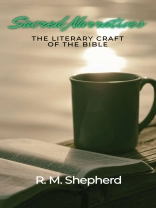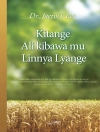This book gives a basic understanding of the Bible’s literary style. By exploring the Bible’s various genres and narrative styles, readers can better understand its content.
The book begins with an examination of the Old Testament narratives, focusing on story arcs, narrative levels, and character development. This will teach readers to identify and interpret the narrative arcs in these ancient stories.
Readers will explore poetic forms in the Psalms, including figurative language, parallelism, and imagery. Wisdom literature’s insights will be given special consideration.
Turning to the New Testament, the book first delves into the Gospels, including a review of the symbolic meaning of the parables. In the following chapter, we will delve into the various literary techniques used by the authors of Acts and the Letters, illustrating their skillful use of literary devices.
The book will also explore the visionary literature found in the Bible, examining the genres of prophecy and apocalyptic writing. Through analyzing these texts, readers will learn to discern the symbolic language and vivid imagery used to convey divine messages.
Through this book, readers will gain a deeper understanding of the Bible’s literary artistry and the significance of its diverse genres.
Circa l’autore
R. M. Shepherd, JD, Ph D, received theological training at Trinity Theological Seminary. Shepherd believes that understanding the Bible’s various literary genres is an aid to interpreting its content. The theology of John Knox, a preacher prominent in the English Reformation’s early years, is explored in her book Sounding God’s Trumpet. She’s also the author of several historical fiction novels. Her religious affiliation is with the League City United Methodist Church, where she is a member.







![Copertina di Brian Schrag & Julisa Rowe: Community Arts for God's Purposes [Chinese] 貼近神心意的社群藝術 Copertina di Brian Schrag & Julisa Rowe: Community Arts for God's Purposes [Chinese] 貼近神心意的社群藝術](https://static.worldofdigitals.com/thumb_webp/740/9781645083740.webp)




